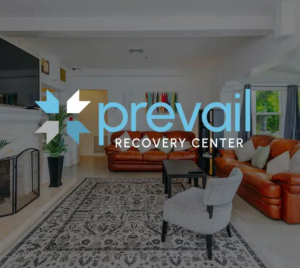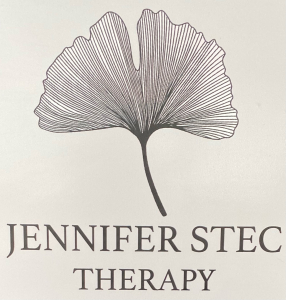Gender-affirming care (GAC) is any social, legal, and medical measures that improve people’s happiness, health, and safety regarding their gender. GAC utilizes a holistic approach to ensure a person’s mental and physical needs regarding gender identity and expression are fulfilled.
Who Accesses Gender Affirming Care?
GAC can be accessed by anyone who requires it. It features various healthcare approaches that are tailored to the individual.
However, not all transgender and gender-diverse people will seek out GAC – the choice is ultimately up to the individual and what feels right to them regarding their gender identity.
Why Is Gender-Affirming Care Necessary?
Gender-affirming care is a life-saving process. According to research, gender-affirming care significantly “improves the mental health and overall well-being of gender diverse, transgender, and non-binary children and adolescents.”
What are some types of gender-affirming care?
There are many different types of gender-affirming care. Here are some of the most common:
Nonsurgical Treatments
Some non-surgical treatment options include:
Laser hair removal: A dermatologist will use a low-energy laser on your hair follicles. As a result, this hair will never grow back after laser hair removal. However, to achieve this result, you will require several treatments.
Masculinizing hormone replacement therapy: During this treatment, a doctor provides hormone medications to reduce more stereotypically feminine traits and promote masculine ones.
Feminizing hormone therapy: During this treatment, a doctor gives you hormone medications that reduce masculine physical characteristics and enhance feminine ones.
What are the Most Common Myths about Hormone Replacement Therapy (HRT)?
Reproductive counseling: Since the previously mentioned masculinizing and feminizing hormone therapies can limit fertility; reproductive counseling can help. This counseling is ideal to start before undergoing hormone therapy or surgery that alters your reproductive organs.
Voice and communication therapy: This therapy includes a trained speech and communication therapist that will help you change how you speak to align better with your gender identity. These changes can consist of your voice’s pitch, how fast you say and how loud, your inflection and pronunciation, the quality of your voice, and more.
Mental health care: Mental health care can help you learn more about your identity and how to prepare for any physical changes. It can also help you address and hope with other people and support systems during the transition.
For mental health care, mental health care professional will discuss all aspects of your transition with you. Be sure to find someone who is LGBTQ+-friendly and specializes in this type of counseling.
Surgical Treatments
Gender-affirming surgical treatments are organized into two broad categories: male-to-female surgeries and female-to-male procedures.
Some of the most common surgeries include:
- Facial reconstruction surgery: This procedure can make your face have more feminine or masculine features.
- Chest and breast surgery: During this procedure, also known as “top” surgery, the surgeon may take out breast tissue to achieve a more flat chest that looks more masculine. They can also augment the shape and size of your breasts for a more feminine appearance.
- Gender affirmation surgery: Also known as “bottom” surgery, these surgeries rebuild your genitals to look and function more like your gender identity.
What Are Some Barriers to Gender-Affirming Care?
Even though acceptance has become more commonplace, many barriers still prevent transgender and gender-nonconforming people from accessing gender-affirming care. Here are some of the five most common ones:
1. Location
To access gender-affirming care, you need to find a quality provider. However, for some people, finding this provider isn’t possible if there are no trans-inclusive health care providers in their area.
At LGBTQ and ALL, we have a database of trans-inclusive healthcare providers worldwide. Be sure to check out our resources.
2. Discrimination and Harassment
If there are no trans-inclusive healthcare providers in your area, many trans or gender-diverse people may experience discrimination or harassment from their doctors. For example, a doctor may use incorrect pronouns for a person, which can negatively impact the quality of care.
Some trans people may also experience physical or emotional harassment at clinics or while they try to get to one.
3. Cost
Gender-affirming care can be costly, either with or without insurance.
For example, medical transitioning can cost upwards of $22,000, according to research in the Journal of General Internal Medicine. This price tag isn’t financially possible for many people.
4. Insurance
The insurance process can also be complex and confusing, especially regarding transition-related coverage.
Many patients do not know whether or not their insurance even covers gender-affirming surgery. In addition, treatment requirements can shift according to the specifics of a person’s coverage, provider, or state where they can find care. In essence, many insurance policies have different requirements that can make the medical transition process more complex.
5. Lack of Information, Support, and Representation
Lack of information can be a significant barrier for transgender and gender-diverse folks. For instance, many patients are unaware of the World Professional Association for Transgender Health (WPATH) guidelines for gender-affirming care.
Family support is also essential when it comes to people accessing gender-affirming care. This fact is especially true for younger trans people who aren’t old enough to make their own choices regarding their healthcare legally.
A lack of family support can cause delayed or no access to gender-affirming hormones or puberty blockers. In addition, a lack of support from loved ones can discourage some people from seeking it out.
A lack of representation of transgender people is another issue that leads to barriers. For example, if transgender people don’t see other people like them, they may believe that there aren’t any options for them.
For better representation, there need to be more uncomfortable conversations that challenge current structures in society. That way, transgender and gender-diverse people can be better supported and cared for and access the necessary treatments.
In Summary
Gender-affirming care can be a life-saving and empowering medical option for transgender and gender-diverse folks looking to transition physically. Hopefully, there will be fewer barriers in the future to accessing this type of care so that transgender folks can lead the best lives possible.















